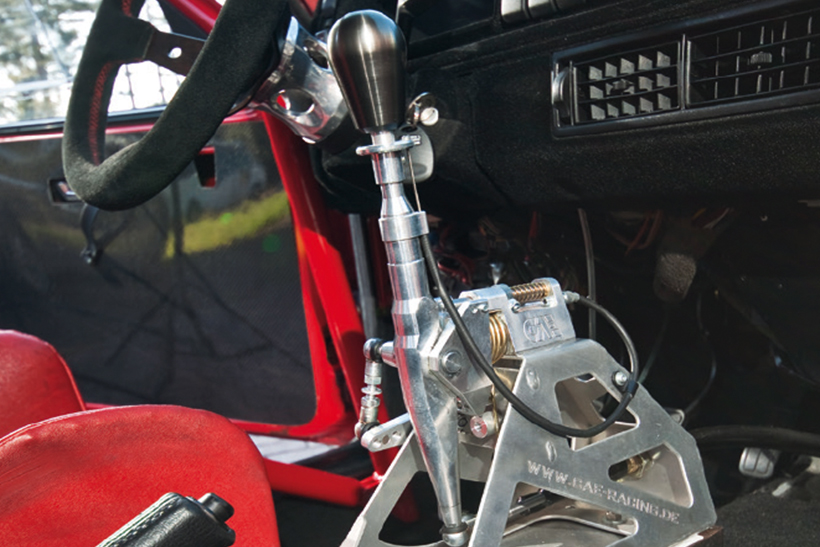Every car has one. Every driver uses one. But they have a much bigger effect on a car’s performance than many realize. Here’s the Fast Car Gearbox Guide…
There are some things in the car world you just take for granted. Gearboxes are the perfect example. Every driver understands how to use them and most car enthusiasts understand what gear to be in for best performance in a given situation. But how many people can actually explain what a gearbox does? Not many, we bet. But that’s perfectly understandable, as not only is it quite a hard thing to understand. But on the face of it, understanding gearboxes doesn’t seem to be any big advantage to even the most ardent car tuning fan.
In reality though, the right choice of gearbox – and we don’t just mean automatic, manual, or the number of gears it has – can have a dramatic transformation on the way your car performs. Read on…
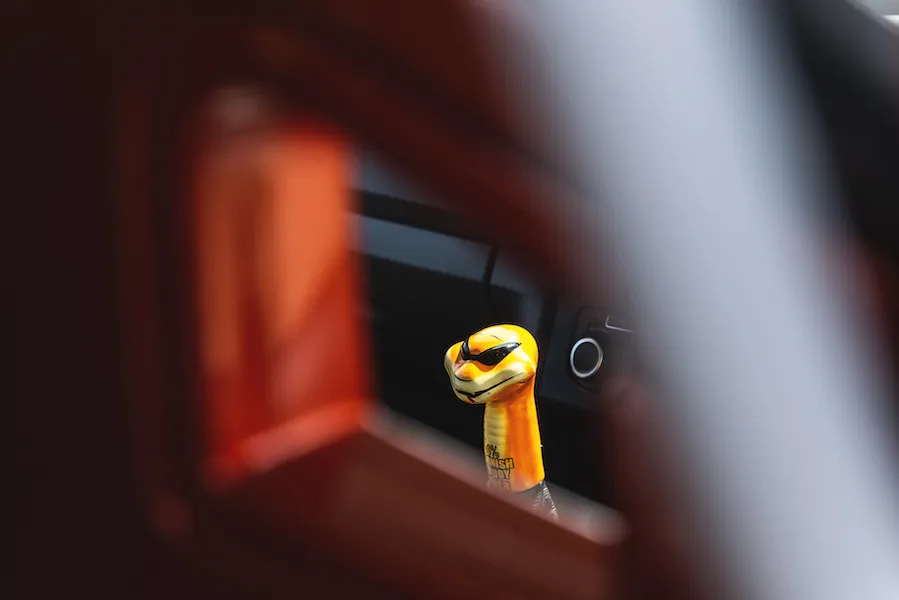
Why would I want to modify or change my gearbox?
People use the old, ‘if it ain’t broke don’t fix it’, mantra for gearboxes more than any other part of a car. But the reality is, there are loads of reasons to mess with it.
The most obvious thing is that cars tuned to produce big power figures can break gearboxes, and if you’re smashing boxes regularly enough, swapping or upgrading to a stronger gearbox is better value for money than constantly replacing your standard one.
Gearing is another very good reason. If you want closer-spaced gears to stay in your engine’s power band more easily, or for a higher top speed, or just faster acceleration, a gearbox with altered gear ratios – or even a different number of gears – is the perfect solution and can make a huge difference.
The final reason is simply: because racecar. And by that we really do mean racing. For the instantaneous, full-throttle gear changing needed to be competitive in motorsport, a standard box is rarely up to the task.
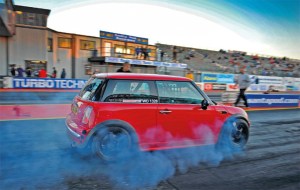
Why does my car need a gearbox?
The fact your car accelerates hard but only reaches low speeds in lower gears, and accelerates slowly and can reach high speeds in higher gears, is something we all know and take for granted. But why does that actually happen?
Well, while most of us can’t explain it easily, knowing why is a great way for you to understand how modifying or upgrading your gearbox could massively improve performance. So here goes…
A gearbox is able to multiply and divide engine torque and rpm. The lower the gear, the higher the torque multiplication is, and the bigger the rpm divide is. There’s a couple of exceptions to this. Firstly the 1:1 gear, which is usually 4th or 5th, means the rpm and torque is the same coming out of the gearbox as it is coming in. Secondly, overdrive gears divide the torque but multiply the rpm instead. While that may sound confusing as hell, describing it in a real world situation makes it easier…
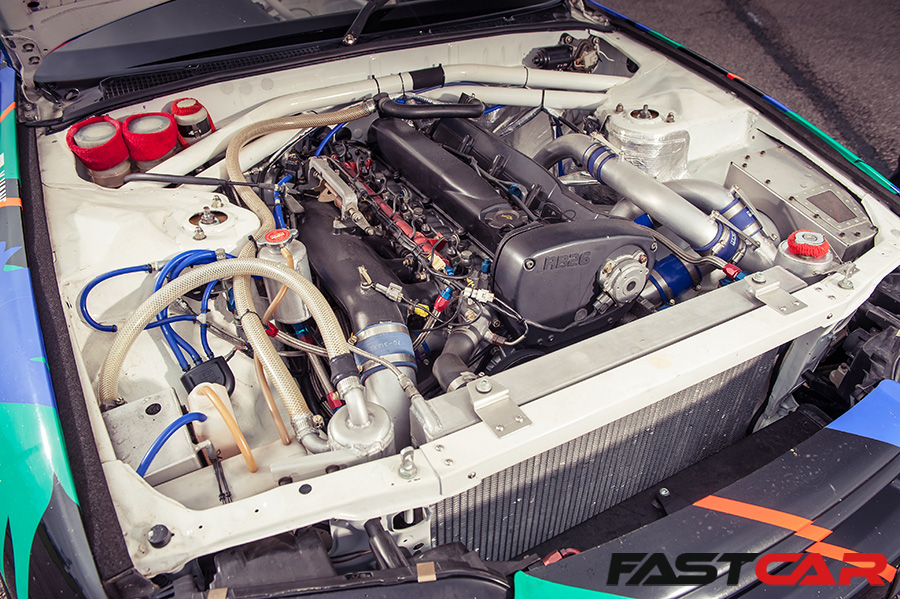
The gears in your imaginary Skyline…
Imagine you own a modified Nissan Skyline GTS-T pushing out 400lb/ft at 4,000rpm – and for the sake of this explanation, this is the rpm we will be looking at in each gear.
Starting at the top, 5th gear is an overdrive gear, meaning gearbox torque output is less than the engine torque output. This means while only 301lb/ ft comes out the gearbox, the rpm is much higher than what the engine is doing – over 5,300rpm – allowing for the car to reach a decent top speed.
Fourth gear is a 1:1 gear, so the 400lb/ft and 4,000rpm that goes into the gearbox comes back out, too.
What about lower gears?
Third is 1.3:1 on a Skyline gearbox, so while output rpm has reduced to just over 3,000rpm (meaning top speed in this gear is lower than previous gears) torque is multiplied to a hefty 520lb/ft, giving the first obvious example of why cars accelerate much harder in lower gears.
In 2nd, things are lower again, with an output rpm barely over half the engine speed, hence the top speed in this gear being around half of what’s possible in the 1:1 4th gear. However, torque output is a massive 772lb/ft, which certainly explains why a car like this can turn its rear tires to smoke in 2nd gear with very little effort.
In 1st, which on this gearbox – like most cars – is incredibly short, output rpm is well under 1,500rpm. Way less than half the engine speed, meaning you’ll be changing up a gear before reaching any significant speed. Torque on the other hand has been multiplied to almost 1,300lb/ft!
The huge torque multiplication in first gear is why even the slowest cars are able to spin the wheels in 1st with a little effort. Even with just 100lb/ft this car would have harder acceleration in 1st than it would in 5th with 400lb/ft. The drawback? The speeds would be much lower.
Understand now? Good…
So now you understand what the gears do, it’s clear to see that, providing you are happy to give up top speed, lower gears will drastically improve your car’s acceleration and punch. And as long as you don’t need all the torque, longer gears can get you the huge top speed you may require.
For many race and rally cars, a middle ground is preferable too, with a longer first gear – almost all production first gears are far too short to serve any performance purpose, and almost all production fifth gears are too long for the same reason. Because of this, a gearbox with a longer 1st, shorter 5th, and nicely spaced gears in between, makes for a very usable gearbox with good acceleration in every gear – and closer than usual gear ratios, making it much easier to stay in the engine’s power band.
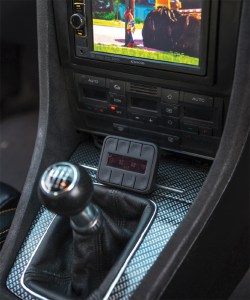
What car gearbox types are there?
Go back a few years, and for almost every vehicle on the market there’d be two basic types of gearbox, manual and automatic. But thanks to constantly improving gearbox technology, these days things aren’t that simple, with a number of variations fitted as standard to almost all production cars.
Conventional manual car gearboxes
Almost all of us have experienced driving a car with a manual gearbox, so we don’t need to give a detailed explanation of how they work. But as you know, you change gear by moving the gear stick in the appropriate direction, and each gear is engaged and disengaged using the clutch.
From a performance point of view, being in full control to be able to select any gear you like at any time is a real advantage, as automatic gearboxes often don’t change either up or down a gear exactly when you want. Manual gearboxes allow fast and positive gear changes too. And of course, having full clutch control enables you to adapt your driving style to suit the situation, from smooth, slow gear changes, to hard fast ones when driving at the limit.
Finally, manual means more driver involvement. Which to most people, means more fun!
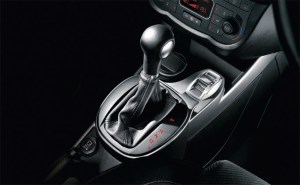
Conventional automatic car gearboxes
We’re pretty sure all of you know exactly what this is. But in case you’ve lived on a remote desert island all your life, an automatic gearbox is one that changes gear automatically, with no need for you to operate a clutch or even touch the gear lever.
While most auto boxes are intended for smoothness and ease of use rather than performance, some autos fitted to performance cars are far better than the slow-shifting stereotype would have you believe. In fact many shift faster than a conventional manual box.
While leaving the decision of when to change up or down a gear to the car is often not ideal, and certainly not as much fun, the fact you can keep your foot nailed to the throttle while the car changes up a gear is an advantage, and these days many autos have a lot more forward gears than you might think – some as much as eight!
Things get really interesting when you bring tuning into the mix. There are a huge amount of upgrades possible, from typical strength upgrades to manual valve bodies that allow you to change gear manually (like a sequential gearbox) and give a much faster, harder shift too.
Auto boxes are the transmission of choice for drag racing, and upgrades such as transbrakes (which we’ll talk about later) and adjusted stall speeds (which help keep the car in the ideal power band), are popular upgrades. They mean auto transmission drag cars are almost always significantly faster on the drag strip than an otherwise equal manual boxed car.
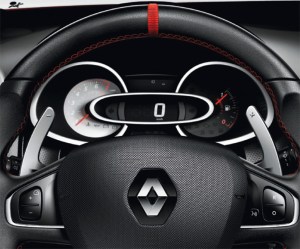
What is a manumatic car gearbox?
While manumatic isn’t an official term, it’s the best way to sum up this type of gearbox, which is basically a conventional automatic gearbox but with the option of full manual-control via paddles, buttons, or a sequential shifting gear-lever.
In practice it’s often almost impossible to tell the difference on the road between these and the more comfort orientated versions of the clutchless manual gearboxes we describe in the next section. And while, like all automatic gearboxes, some do indeed change faster than most manual gearboxes, even the best manumatic boxes can’t change gear as quickly as the performance orientated clutchless manuals.
While the majority of really high performance vehicles don’t use this setup, some larger ones do, such as the Audi RS6 and many AMG Mercedes for example. These cars want a mix of comfort and performance that most clutchless manuals, and even twin clutch boxes, struggle to achieve.
Another reason cars use manumatics is that some auto-based gearboxes are incredibly strong, so some cars are fitted with them simply as there is no reliable manual gearbox that can hold those power levels!
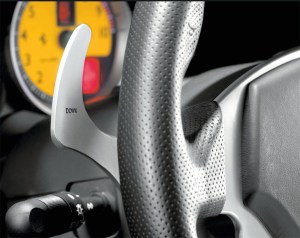
What is a clutchless manual car transmission?
You can find this type of gearbox in a wide variety of vehicles, but performance cars are the most common beneficiaries due to the lightning fast gear change potential of this style – faster than even the best manually shifted autos.
A clutchless manual actually has a clutch. It just doesn’t have a pedal, as they are simply conventional manual gearboxes with the clutch automatically operated as part of the gearbox system. Examples of this setup in production cars range from the slow-shifting Smartcar box, the clutchless manual boxes in many Alfa Romeos, as well as current Citroëns and Vauxhalls, to the sporty BMW SMG boxes, right up to the ultra-fast shifting boxes in some Ferraris, Aston Martins, Lamborghinis and the Lexus LFA supercar.
The main disadvantage of this type of gearbox is, no matter how clever the ECU that controls it is, they’re not mind readers. So the systems tend to either be super smooth but useless in performance terms, such as the Smartcar box. Or insanely fast shifting (150 milliseconds in the Ferrari Enzo and a reported 55 milliseconds in the one fitted to the Lamborghini Aventador!), but jerky during low speed driving. In fact, many of you will have seen various Top Gear presenters moaning about certain ‘flappy paddle’ gearboxes for this very reason.
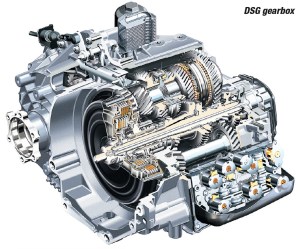
What is a twin-clutch car gearbox?
First used in Porsche Le Mans racers and Audi Group B rally cars in the early 80s, manufacturers use various three letter acronyms – DSG, DCT, PDK, MCT, LDF and more – to refer to twin-clutch gearboxes. All boil down to the same thing though: a very clever version of a clutchless manual that uses two separate clutches, one for odd numbered gears and one for even numbered gears.
The reason for the two separate clutches is what makes twin-clutch gearboxes special. It means the next gear, be it up or down, can be pre-selected by the gearbox, allowing an insanely fast gear change time that’s practically undetectable, with just eight milliseconds for an up-shift quoted for the VW/Audi DSG gearbox. That is over 60 times faster than the 0.5 seconds most conventional manual gear changes take a driver to complete when pushing hard. Which is why twin-clutch equipped cars tend to have better acceleration figures than the otherwise identical manual transmission version of the same car.
With twin-clutch gearboxes fitted to a wide range of high performance cars, such as top Audi and VW performers, and the Nissan GT-R, aftermarket clutch upgrades allowing twin clutch boxes to handle the huge power levels of tuned cars are already widely available too. In fact the Bugatti Veyron’s twin-clutch gearbox can handle over 1,000lb/ft of torque as standard!
What is a CVT car gearbox?
You may never have heard of this type of gearbox, even though there are quite a lot of production cars using this setup, and it’s known as a CVT, which stands for continually variable transmission.
The theory is fantastic. It gives a literally infinite amount of gear ratios between its minimum and maximum settings, allowing the engine to stay at the ideal rpms for peak performance or economy through a wider range of speeds than a normal transmission. But the reality is, for now at least, that CVTs aren’t the best box for a performance car.
We won’t explain exactly how a CVT works as it’s complex and boring, but what it does give is a very smooth, if a bit of a strange-feeling, drive. When we say strange-feeling, you really need to drive one to experience it. But speeds increasing without the revs moving is normal, as is the revs wildly changing regardless of throttle inputs – which to someone used to a manual transmission sounds like a badly slipping clutch.
The feeling is so odd that many current CVT cars have fake gear changes built in to the way the car drives, to make drivers feel like the car is going up and down gears like a conventional automatic, although in reality the box hasn’t got any gears as such.
The future of CVT
Current CVT setups aren’t really tailored for performance use and tend to be a bit unresponsive when driving hard compared to more performance orientated transmissions. But one day, in the not-too-distant future, we’re fairly convinced that the majority of high performance road and racecars will feature CVT boxes.
We’re not joking either. Formula 1 banned CVT transmissions way back in 1994. It was clear that if an F1 team managed to create a viable version for their cars, they would totally dominate the sport with a huge and unfair advantage!
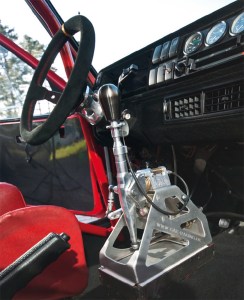
What is a sequential manual car gearbox?
While not something you will find on a production road car, sequential manual boxes are found on almost every high-end motorsport car, and for maximum no-compromise performance it’s currently the ultimate choice.
This type of gearbox is far from refined. In fact they’re noisy as hell and jerky when driving slowly too, hence why you don’t find them on production cars. But as a box that changes up and down as fast as lightning, and can take masses of punishment too, they’re the ones to have.
Gear change speeds are as low as 20 milliseconds, faster than most twin-clutch gearboxes, and they do that while being hugely strong for their size, simple and lightweight too.
Being a sequential box means, of course, you can only go up and down gears one at a time. But in the heat of racing this is usually a good thing, to prevent miss-shifts. You can use a conventional lever, or buttons, or steering wheel mounted paddles to shift a sequential box. And while the cars do have clutches, you only tend to use them to pull off from a standstill. The rest can be done clutchless and often at full throttle.
Words by Stav.

